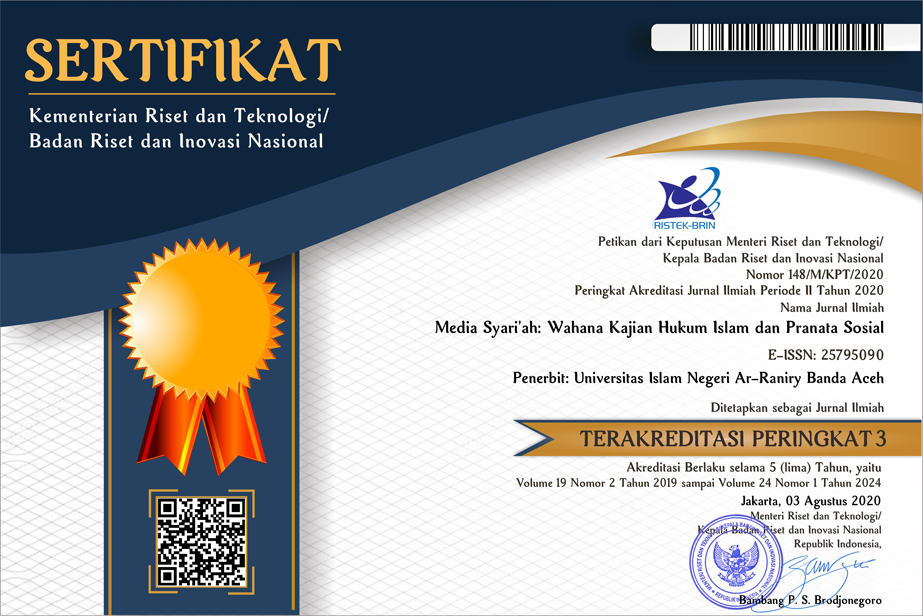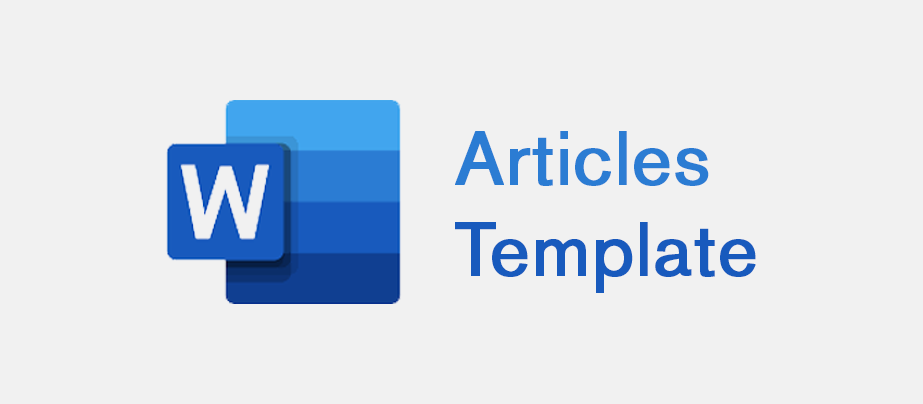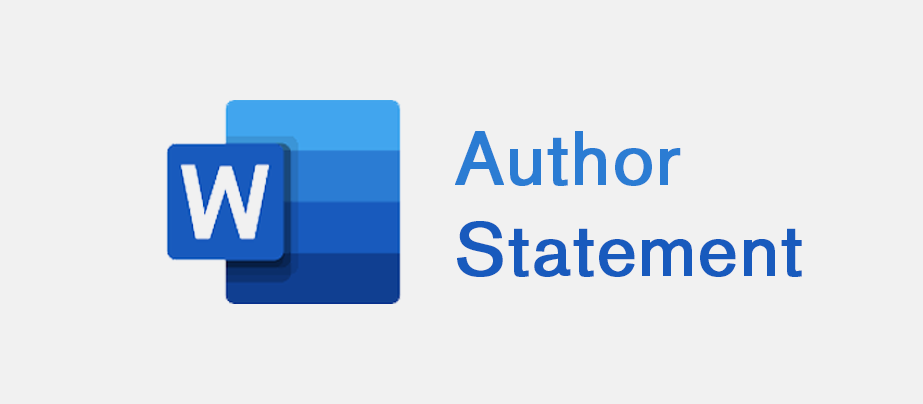Waqf Higher Education: Implementation Model In University College Bestari (UCB), Terengganu, Malaysia
DOI:
https://doi.org/10.22373/jms.v17i2.1934Keywords:
Waqf Higher Education, Model dan EducationAbstract
Waqf higher education was an important asset in developing knowledgeable intellectuals. This waqf higher education was a successful institution that uses waqf as it source of operation. It can be seen through the model of College University Bestari (UCB) in the implementation of higher education waqf. The objective of this writing is to focus on the historical background, the development of waqf asset, contribution and beneficial distribution of waqf property as well as challenges and prospects of higher education in Malaysia. The analysis result found that UCB had been successfully expanded the waqf funds through the waqf scheme of land lot by getting approval from Terengganu Islamic Religious and Malay Customs Council (MAIDAM). Thus, the implementation of educational waqf held by UCB can be used as a model to other educational institutions in order to develop waqf property and generate revenue. Therefore, the model that existed in this waqf institution need to be systematically planned and implemented to ensure that it can be a guarantee and catalyst towards education finance system of the Muslim community.References
Abdul Halim Ramli & Ahmad Che Yaacob (2005). Islam Hadhari : Pengukuhan Institusi Baitulmal dan Wakaf di Malaysia. Shah Alam : Pusat Penerbitan Universiti (UPENA) UiTM
Abdul Halim Sunny (2007). Dana Wakaf Untuk Pendidikan : Satu Tinjauan Awal. Jurnal Pengurusan JAWHAR, Vol.1, No.2.
Abu Bakar Manat (2007). Isu-isu Semasa Berhubung Pembangunan Tanah Wakaf, Jurnal Pengurusan JAWHAR, Vol.1, No.1
Ahmad Zaki Abd Latiff, et.al (2008). Wakaf Pengurusan dan Sumbangannya Terhadap Pendidikan Islam di Malaysia. Shah Alam : UPENA UiTM Publishing Center.
Alli Ahmed Khan (2014), “Beneficial Interest Of Waqf In The Minority Community : Experience In The India Pupulationâ€. This paperwork had been presented in 2014 International Waqf Seminar, organised by Department of Waqf, Zakat and Hajj (JAWHAR) and Zakat Foundation of Malaysia.
Davut Gazi Benli (2014), “The Evolusion of Qawf Development In Turkeyâ€, This paperwork had been presented in 2014 International Waqf Seminar, organised by Department of Waqf, Zakat and Hajj (JAWHAR) and Zakat Foundation of Malaysia.
Habibah Ahmad et.al., (2011) “Pelancongan Budaya di Koridor Ekonomi Wilayah Pantai Timur (ECER) : Isu dan Cabaran, Malaysian Journal Of Society and Space, p. 180-189.
Hasnol Zam Ahmad (2007). Cabaran Dalam Mempertingkatkan Potensi Pembangunan Tanah Wakaf, Jurnal Pengurusan JAWHAR, Vol.1 No.1.
Mohamad Zaim Ismail (2013). “ Pemerkasaan Wakaf Di Malaysia : Satu Sorotanâ€. This paperwork had been presented in the Fifth Islamic Economics System Conference (iECONS 2013), organised by Economics And Muamalat Faculty, USIM.
Mohd Afandi Mat Rani et.al., (2014), Transformasi Wakaf Di Malaysia : Isu dan Cabaran. Shah Alam : Permodalan Nasional Berhad
Muhamad Rahimi Osman et.al., (2009).Pendidikan Tinggi Islam : Cabaran & Prospek. Shah Alam : Pusat Penerbitan Universiti (UPENA) UiTM
Muhammad Abu Zahrah (1971), Muhadarat fi al-Waqf. Dar al-Fikr-alArabi : Mesir
Muhammad Ridhwan Ab. Aziz et.al (2014). Waqf Financing For Higher Education : Issues, Challenges and the Way Forward. Negeri Sembilan : USIM Publisher.
Budget Presentation. Ministry of Finance Malaysia
Budget Presentation. Ministry of Finance Malaysia
Ninth Malaysia Plan (2006-2010).
Razali Othman (2013). Institusi Wakaf Sejarah Dan Amalan Masa Kini. Kuala Lumpur : Dewan Bahasa dan Pustaka.
Siti Mashitoh Mahmood et.al., (2014) “ Waqf Financing For Higher Education : Contemporary Funding Application in Some Selected Countries†dalam Wan Kamal Mujani, Pelestarian Institusi Wakaf : Memperkasakan Pendidikan Tinggi Negara. Bangi : Islamic Education Faculty UKM, p. 263-278.
Suhrawardi K.Lubis et.al (2010). Wakaf dan Pembudayaan Umat. Jakarta : Sinar Grafika
Wan kamal Mujani (2014). Pelestarian Institusi Wakaf : Memperkasa Pendidikan Tinggi Negara. Bangi : Universiti Kebangsaan Malaysia
Letter: MAIDAM.03-003/46-(11) dated 13 July 2009.
Pekeliling LHDN : 01/35/42/51/179-6.3872
Newspaper
Adnan Mohamad (2014), “UCB Biayai 200 Pelajar Miskinâ€, Utusan Online, 2 April 2014.
Anon (2010), “Peyatim Mahu Wujudkan Universiti Wakafâ€, Utusan Malaysia, 2 November 2013: p. 2â€.
Anon (2013), “University College Bestari Cipta Sejarah Baharuâ€, Utusan Malaysia, 26 October 2013.
Arkib (2002), “Kursus Perubatan Dan Kejuruteraan Di KTB†Utusan Online, 27 Mac 2002.
Arkib (2010), “Kolej Teknologi Bestari perkenal Skim Wakaf Pendidikan Peyatimâ€, Utusan Online, 20 October 2010.
Arkib (2011), “Kolej Teknologi Bestari Tunggu Kelulusan Naik Tarafâ€, Utusan Online, 18 Mac 2011.
Bernama (2014), “Bajet 2015: RM56 billion untuk pendidikan†Sinar Harian, 10 October 2014.
Rohami Shafie (2014), “Sisi Ekonomi Keperluan Rakyatâ€, Utusan Online, 13 October 2014.
Shafie Nor (2011), “PM Bincang Isu Kelewetan Laksana Projekâ€, Utusan Malaysia, 21 December 2011.
Shukri Rahman (2014), “Funding Education Via Islamic Endowmentâ€, Akhbar FOKUSM, 28 Jun 2014, p.24.
Zuarida Mohyin (2010), “Peyatim Perkenal Wakaf Bagi Tapak UCBâ€, Utusan Online, 1 November 2010.
Thesis Reference
Hanida binti Abdul Samat (2003), “Pengurusan Kebajikan Anak Yatim Di Pertubuhan Kebajikan Anak Yatim Malaysia (PEYATIM): Kajian Menurut Perspektif Al-Quran (Ijazah Sarjana, Universiti Malaya), p. 135-178.
Interview
Asmiah Ab Ghani, (Setiausaha YAWATIM),“Muhammad Hamizan Ab Hamidâ€, University College Bestari (UCB), 17 December 2014.
Haji Muhammad bin Deraman, (ALP of University College Bestari (UCB)), “Muhammad Hamizan Ab Hamidâ€, Universiti College Bestari (UCB), 18 December 2014.
Mohd Azahani Bin Mohd Noor @ Ab. Aziz, (Treasurer of UCB),“Muhammad Hamizan Ab Hamidâ€, University College Bestari (UCB), 18 October 2014.
Tengku Mahmud Tengku Mansor, (Executive Manager of UCB),“Muhammad Hamizan Ab Hamidâ€, University College Bestari (UCB), 18 October 2014.
Internet
Official Portal, UCB Website: http://www.ucbestari.edu.my.
Official Portal of Economic Planning Unit: http://www.epu.gov.my/.
Official Portal of Department of Information of Malaysia: http://www.penerangan.gov.my.
Official Portal of myCorridor - Official Investment Gateway Malaysia: http://www.mycorridor.malaysia.gov.my/
Official Portal of Ministry of Tourism and Culture of Malaysia: http://www.motac.gov.my
Downloads
Published
Issue
Section
License
MEDIA SYARI'AH: Wahana Kajian Hukum Islam dan Pranata Sosial has CC-BY-SA or an equivalent license as the optimal license for the publication, distribution, use, and reuse of scholarly work. Authors who publish with this journal agree to the following terms:
1. Authors retain copyright and grant the journal right of first publication with the work simultaneously licensed under a Creative Commons Attribution-ShareAlike 4.0 International License that allows others to share the work with an acknowledgment of the work's authorship and initial publication in this journal.
2. Authors are able to enter into separate, additional contractual arrangements for the non-exclusive distribution of the journal's published version of the work (e.g., post it to an institutional repository or publish it in a book), with an acknowledgment of its initial publication in this journal.
3. Authors are permitted and encouraged to post their work online (e.g., in institutional repositories or on their website) prior to and during the submission process, as it can lead to productive exchanges, as well as earlier and greater citation of published work (See The Effect of Open Access).
You are free to:
Share — copy and redistribute the material in any medium or format.
Adapt — remix, transform, and build upon the material for any purpose, even commercially.
The licensor cannot revoke these freedoms as long as you follow the license terms.
All papers published in MEDIA SYARI'AH: Wahana Kajian Hukum Islam dan Pranata Sosial are licensed under a Creative Commons Attribution-ShareAlike 4.0 International License.



.png)


.png)
.png)
.png)



